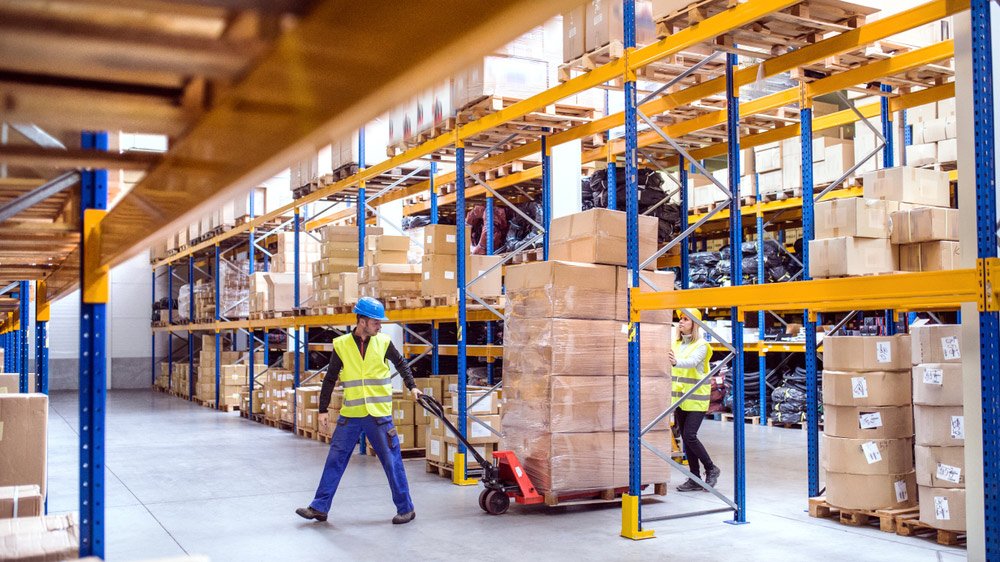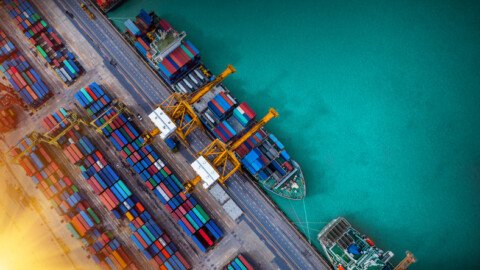Logistics is experiencing the most vibrant and challenging era. With this backdrop, it is not surprising that demand for logistics service providers (LSPs) is strong and growing. LSPs are aiming to fend off new disruptive competitors by building innovative digital platforms and tools for use internally and externally. This will help them access the best of new management tools with less investment of time, resources and capital expenditure. Also as a bonus, more tightly integrated collaboration with customers resulting from a common platform leads to greater operational performance. However, “Differentiating” is particularly important in an increasingly crowded and competitive space. The first thing for any company is to think like a prospect when evaluating whether its logistics value proposition meets the “promise” to the market criteria—which would require—to be both accurate and memorable.
Upamanyu Borah
Logistics nowadays is no more about packing it up and shipping it out. It is purely about providing end-to-end solutions and creating operational efficiencies, that have never been as clear as it was in 2020. By providing extra services as marketing, consultation, and production assistance for clients, logistics service providers are creating valuable new markets for themselves.
Serving a customer and keeping them pleased in the long run is the hardest part of being in a business in this modern age. E-commerce has done a lot of great things for the world, but it has also spoiled the consumer for choices. This has resulted in all-time low brand loyalty by customers. Businesses now have to scrap for every bit of validation and acceptance from customers and make their quality experience a top priority.
As a result, we’re seeing organisations—authorities, operators, service providers, third-party logistics (3PL) companies, and forwarders—doing more and more to improve the end-to-end supply chain. That’s what today’s customer wants—a host of options that enforce efficiency in service solutions and its delivery.
Here, what comes handy is the presence and influence of companies in various regions and across countries.
There are many ground-level issues that need to be worked out—from collaborating with a local transportation company to serve consignee requirements, and everything in between. There are international logistics companies that have the understanding of market conditions in every new market. Today, in fact, all major players in the logistics sector have an international presence, but in many cases, the jobs that they do is of a very local nature. This is just perfect synergy: an international presence and a local understanding.
Major players like DHL, FedEx and UPS have long back set up dedicated units for servicing SMEs. The requirements of an SME are different from that of a larger firm. With that in mind, these companies have created separate SME cells and the idea has worked really well. And not without reason; for most big-ticket logistics players, it’s SMEs that the big bucks are coming from, contributing anything between 35-50% of the total revenues.
The ‘extra value’ in each engagement
Few years back, industry experts were of the view that with the growth of organised retail, there will be an increased level of mutual dependence between small manufacturers and suppliers, and logistics firms. No surprise, today, logistics firms are already playing the role of integrating the back-end and front-end of the retail business infusing technology that has given the edge to deploy and run a wide range of applications.
“India is one of the fastest-growing economies in the world and is home to some of the largest manufacturing facilities, delivering goods in both domestic and international markets. Global shipping has to be at pace with the moving economy and transparency plays an instrumental role in tackling the issue of trust among stakeholders,” Abhishek Chaudhary, VP- Corporate Affairs, NICDC and Director, NLDS (a track and trace technology joint venture) said to CargoConnect.
“During these trying times, when the tides continue to shift, it’s not surprising that analytics, widely recognised for its problem-solving and predictive prowess has become an essential navigational tool. COVID-19 has accelerated the adoption of data analytics to keep supply chain industry moving forward. The repurposed and reshaped supply chain of the future will have to deep dive into analytics to make informed and efficient decision making during crises.”
“Supply chain and logistics strategies will sharpen focus on technology resources, infra, multimodal multi-partner omnichannel capabilities in order to address needs of the future. This will mean more partnerships, multi-skilled talent, and capability-sharing models,” explained Rajat Sharma, Head- SCM, Hamilton Housewares.
“Whilst earlier tech investments in SCM were made in directions of scale and efficiency, it should now also form the basis for demand sensing, risk sensing, flexible fulfilment models, and also bring in new ways to operate such as crowd sourcing. In certain sectors, vendors will need to go beyond the traditional service delivery and partner with crowd sourcing platforms to give out the visibility and quality of data needed by principals.”
With so much potential, the on-demand logistics sector is sure to grow, although it could do with some more funding. If the industrial growth the country has seen in the past two decades is any indication, India will soon need more players for its logistics needs. Besides, with hyperlocal startups coming up every day, the industry is bound to get a boost, as outsourcing the delivery process is also essential to manage surges better and have an even delivery spread.
“It is imperative; manufacturing and inventory management strategies will change to build-in risks alike during the COVID-led lockdowns. Although economies of scale will continue to play an important role, but a portion of risk mitigation will kick in and this will mean more de-centralised manufacturing, storage and distribution capabilities,” informed Rajat.
“Today, complex supply chains are collaborating with many other equally sophisticated supply chains in order to retain, grow and satisfy customers. For networks to be able to respond to these diverse needs, they need collaborations and customisations with functions/partners/service providers and experts. To ensure a great last-mile experience, tech integration and visibility of stock (even that on the move) is an essential piece.”
“Shared visibility is creating new playing grounds with new rules. We’ve gained from integrating partners with IT-based platforms as well as joining hands with aggregators to use their capabilities. This is a field that presents huge potential in times to come,” Rajat added.
Increasing demand is hence not enough for the logistics sector to thrive. There is a need to transform the sector from just a support provider to an essential service provider. Ease in placing orders online, receiving the products in required condition at the required time, reducing the wastage due to returns, overall customer experience, all these will play a critical role as the sector is poised to grow in double-digit. Thus, extensive use of technology, strategic approach to network creation, breeding the talent pool, and enforcing governance will play a pivotal role in the development of the sector. These will also help in establishing the logistics ecosystem, achieving operational efficiencies, and gaining the economic benefits of size and scale.
“Spend time on strategy and solutions design and the product or service will ultimately see good growth,” said Yashpal Sharma, Managing Director, Skyways Group. “Technology will remain crucial for businesses of tomorrow and it will give us what we want from it, but to know the ‘right need’, we must spend time on the floor.”
“Basics of business must be studied by the workforce. They must spend time in operations to understand the various nuances of business as well as customer needs.”
According to Yashpal, a true multimodal network is what the industry needs. “While we do have all stakeholders offering solutions—across land, sea, air, but off-the-shelf multimodal solutions do not really exist. This can only happen if there is a long-term roadmap initiated by the government and private players.”
Akash Bansal, Country Head, Om Logistics agrees…“If we compare ourselves with global logistics companies, we used to lack technology/network, but now since we have them, we can go places. In India, we used to have very traditional model of operations, but now with technology-enriched interventions, we have opportunities to move beyond boundaries.”
“Definitely, more improvements and reforms are coming in. Government is investing whopping amounts into modernising road infrastructure which will certainly help in breaking our industry bottlenecks.”
“We can now talk about the optimum utilisation of resources in the logistics industry, which will lead to costs savings and help boost the Indian economy.”
“Now is the time for consolidation of logistics. The next two years will be the time for building and to achieve something meaningful on top of it. With consolidation, there will be the price deciding factor for customers and companies. They won’t need to bother or pay for the inefficiencies in the system. All these will help streamline expense management which will further boost logistics.”
“From here on, I believe the industry can seize the opportunity to grow and lead—companies can leverage capabilities to modify or reform themselves into integrated and customised global logistics providers offering turnkey solutions.”
“Working in collaboration, we can jointly present new options to help create a bold vision and proactively move to build new business models that will position the country to win in the changing trade scenarios.”
A sound marketing plan in practice
The unwritten rule across any industry is that disruptive forces are constantly at play, reshaping the way organisations think about technology, conduct business, and look to the future.
This is, of course, true for the logistics industry where market trends are impacting the sector to a great degree.
With another year soon to come to a close, many B2B companies, including logistics businesses, are focused on planning for the year ahead. For some companies, that means developing a marketing plan or enhancing their plan from the previous year with updated strategies and tactics that increase efficacy. A strong marketing plan holds together all of the tactics, or links, in a company’s marketing effort to help things run smoothly and guarantee success in the form of qualified leads, higher ROI and more sales.
“Even as the logistics sector, like all others, has been quick in digital adoption to maintain efficacy and productivity, logistic brands continue to shun away modern formats of marketing, which could go a long way in amplifying the current growth spurt that the sector is experiencing in the midst of the pandemic,” says Srideep Sen, an expert Independent Marketing Consultant and former AGM- Marketing and Communication at DTDC—one of the leading courier and parcel delivery companies in India.
“The role of modern marketing today has drastically evolved and now encompasses a wider role of not just creating business and positive visibility, but building an entire robust image of a dynamic, ever evolving brand in itself. From marketing campaigns that measured ROI in sales to campaigns which now measure reach, engagement, leads, emotional reactions and alignment with core philosophies of the wider audience, logistics companies today need to wake up and embrace modern marketing tools to continue to thrive and expand in the world of the future.”
Sen lists five key marketing tools that every logistics and supply chain brand needs to embrace, in order to continue staying relevant and thriving in the post-COVID market:
Integrated Marketing Solutions: Tech solutions in the form of Automation software like Customer Relationship Management (CRM) and Lead Management System (LMS), are two of the most commonly used products by several logistic firms. However, currently they operate in not a fully integrated format, which is desirable and therefore resulting on loss of potential new business opportunities, as it becomes quite difficult to convert the leads into paying customers in a timely manner. Integrating the two completely can help create a robust engagement platform, which allows a brand, to promptly and effectively engage with both existing and potential customers, ensuring every possible business opportunity can be promptly handled.
LinkedIn Sales Navigator: This is yet another platform that remains under-utilised by corporates, who tend to vaguely focus on social media marketing platforms but fail to understand the potential of specific tools on these platforms which could be best suited for their business. The LinkedIn Sales Navigator allows brands to access a rich data of verified corporate leads, with specific details like individual designations, roles, backgrounds, organisations and industries, who can be engaged with directly through the in-mail, to make brand pitches and collaboration proposals. In addition to this, LinkedIn Sales Navigators also allows the brand to create blogs, and build a unique positioning for the brand through relevant narratives and engage through targeted marketing campaigns, across the world.
Content Marketing: Even as digital and social media platforms gain prominence in the larger scheme of marketing, content continues to emerge as the key for all impactful stakeholder engagements. From media articles and blogs to audio video and podcasts, content is now driving engagement in both English as well as other international and regional language formats, changing the dynamics of brand positioning, reach, engagement, messaging and ROI. Irrespective of the platform or the product/ service, Content marketing is one area that no brand can afford to overlook, especially ones in the rapidly evolving logistics sector.
Thought Leadership: In order to be seen and heard today, it is important to not only be efficient and cost-effective but also to be futuristic and visionary. In case of logistic companies, these translate in adoption of green supply chain and responsible carbon footprint, commitment to social welfare and fair corporate governance, especially in the times of crisis. Showcasing thought leadership through participation on trade platforms and promoting views and ideas that help shape the future of the sector, has become the key to ensuring positive visibility, and thus brand affinity among stakeholders.
Public Relations: In the age of information overload, fake news, and virulent digital media content, PR has emerged as a powerful tool that no brand can afford to miss out on. Effective PR allows brands to create and control a positive narrative in the minds of the fast evolving consumer, with their new preferences and behaviour patterns. Factors like company philosophy, social and environmental responsibility, and core beliefs and values of a brand and its spokesperson, have all become vital in the eyes of the new consumer. PR outreach helps brands build these narratives and create a strong media presence, thereby enabling even B2B logistic brands to gain favourable results when dealing with clients, government officials, traders, vendors and even when attracting talent.
Conclusion
Market trends, such as those outlined above, are going to continue to impact the logistics sector well into the future. However, the success of trend-shaping nascent technologies requires that they are integrated with existing solutions and infrastructure. The events of 2020 have disrupted the entire supply chain and the logistics industry is no exception. Companies that succeed in 2022 and beyond are those that will embrace a combination of the top trends in logistics management to become resilient to supply chain shocks.
Reports suggest that the Indian logistics sector, US$ 200 billion in size, is set to grow at over 10% CAGR in the next five years to reach US$ 320-330 billion. Growth in demand can be a start point, but growing in size and scale will demand more fuel and power. Companies should now no longer view logistics just as a business enabler but as a strategic differentiator for long-term growth and value creation.
Rather than searching for quick fixes, take the time to review your current strategies and take note of what’s working and what’s not. The imperative is to compare everything—company branding, website development, SEO, public relations, social media and content marketing efforts against competitors and the industry-standard to see how to improve.







